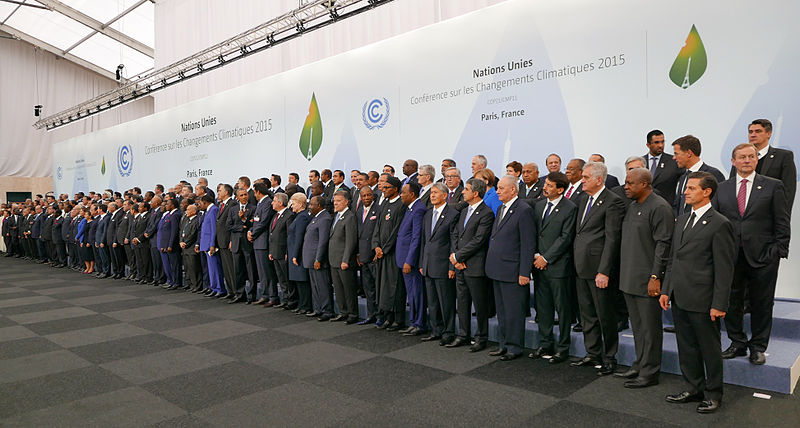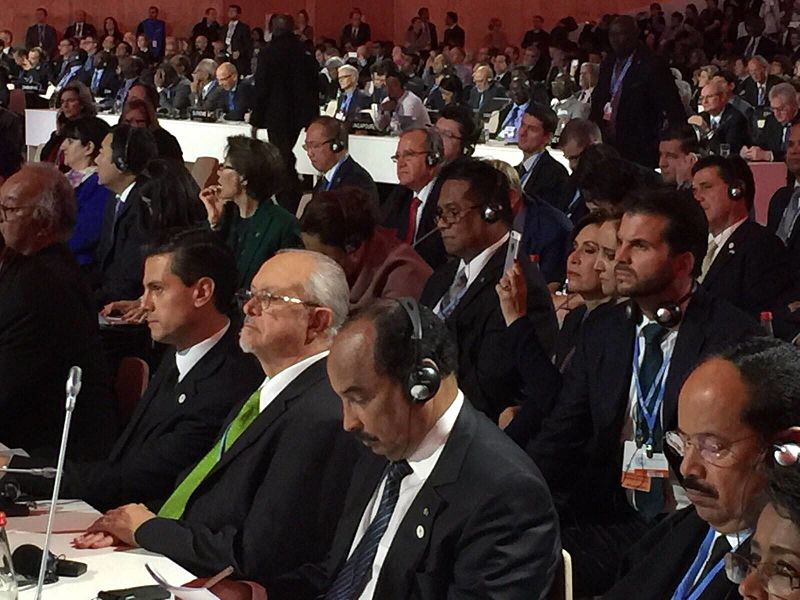Paris Agreement on Climate Change ‘Relies on Unproven Technologies’
This year, nations have joined hands to come up with an agreement that is supposed to be a more concrete and determined effort in fighting global climate change. At the 2015 United Nations Climate Change Conference also known as COP 21, 196 nations adopted the Paris Agreement that seeks to enhance the implementation of the United Nations Framework Convention on Climate Change (UNFCCC) by limiting the increase in global average temperature below 2°C above pre-industrial levels, limiting the temperature increase to 1.5°C above pre-industrial levels, boosting the ability to cope with the adverse consequences of climate change, fostering climate resilience and low greenhouse gas emissions development, and providing consistent finance flows that emphasize low emissions of greenhouse gases and developments that are climate-resilient.
All of these sound good except that they stand on “shaky technological foundations.” This is at least what one article on MIT Technology Review says. The article was by MIT Technology Review senior editor for energy Richard Martin, who is also the author of the book “Coal Wars: The Future of Energy and the Fate of the Planet.”
Reliance on Wishful, Illusory Technologies?
For Martin, the endeavor to address global warming as outlined by the Paris Agreement is based on technologies that have not been proven yet or technologies that are still far from commercialization or widespread use. The MIT Technology Review senior editor believes that dramatic progress is required in three fundamental technologies: energy storage, nuclear reactors, and carbon capture and storage. Martin thinks that energy storage and advanced nuclear reactors are already feasible considering the massive investments poured onto them. However, when it comes to carbon capture and storage, there’s not enough progress to prove viability.
Compared to nuclear power and renewable energy technologies, solutions for carbon sequestration and storage are still far from becoming viable for massive deployment. As the International Energy Agency’s road map for carbon capture and storage states, over 2 billion metric tons of carbon dioxide must be removed from the atmosphere annually by 2030 to avoid breaching catastrophic warming levels. This target is simply unachievable with the kind of carbon capture technologies available at present.
The Global CCS Institute claims that there are several carbon capture and storage projects being developed in different parts of the world, and these are expected to remove around 40 million metric tons of carbon dioxide every year. Unfortunately, several major related US and UK projects have been scrapped. Right now, the it’s difficult to be optimistic knowing that carbon capture technologies are far from adequate and that there isn’t enough infrastructure to transport the sequestered carbon dioxide and have it stored underground. Current technologies entail enormous costs and, in the words of Martin, “too cumbersome for commercial deployment.”
‘Fanciful’ Afforestation
The idea of afforestation or the planting of massive forests to take out greenhouse gases also does not sound convincing to Martin. He cites the thoughts of climate scientist Tim Flannery that it would require a forest that is around four times the size of the entire Australian continent to make any noticeable result. The United Nations’ Environmental Panel also has the same conclusion. In theory, carbon sequestration can be done through large scale reforestation efforts and the expansion of already existing large forests. However, until now the theory has not seen significant implementation and actual contribution to the goal of taking out greenhouse gases from the atmosphere.
Can Tech Really Stop Climate Change?
Some of the world’s biggest entrepreneurs have joined forces to establish the Breakthrough Energy Coalition. It’s an organization that puts emphasis on the use of technology to combat global warming to supplement the policy-based tack of the world’s governments. Huffington did an interesting interview with Edward A. Parson, faculty co-director of the Emmett Institute on Climate Change and the Environment at the University of California.
Parson agreed that technology plays a vital part in battling global warming, that it’s a decisive factor. For him, climate change is mostly a technical problem to which a largely technical solution is suited. Technology can enable the development and commercialization of less-damaging fuel or energy sources. Technology can also be used to repair the damage already existing.
However, Parson can only cite positive developments in energy storage, nuclear, and renewable energy technologies. He has high hopes that improving on these technologies can create significant contributions to battling out climate change. When it comes to carbon sequestration and storage, though, he failed to mention anything.
Global warming is quickly becoming something even the most persistent skeptics could no longer deny. Its manifestations are difficult to ignore or shrug off. Something realistic needs to be done and it shouldn’t be just about policies and fancy promises. The area of carbon capture and storage, in particular, needs more attention.


